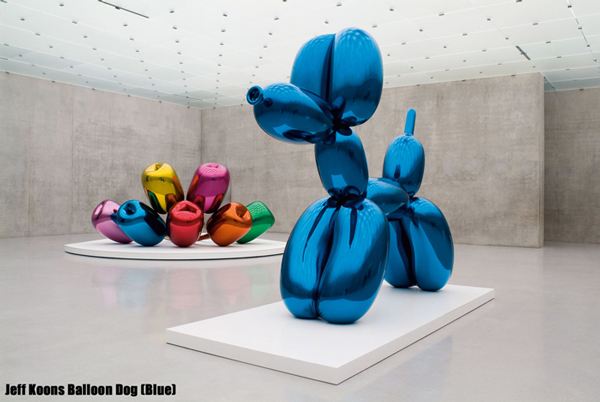Throughout history, artists have depicted canines in their works.
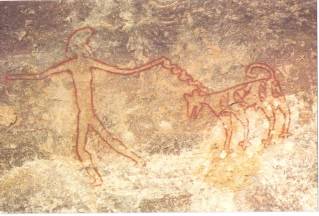
Few things inspire us like our pets and since their domestication many thousands of years ago, dogs have been a steady source of inspiration for artists. Dogs have long been depicted to symbolize guidance, protection, loyalty, fidelity, faithfulness, watchfulness and love.[1]
Some of the first cultural depictions of dogs extend back to when homo sapiens first began drawing on cave walls. Some of the earliest cave art in the Bhimbetka rock shelters in India includes depictions of a man with a dog on a leash.
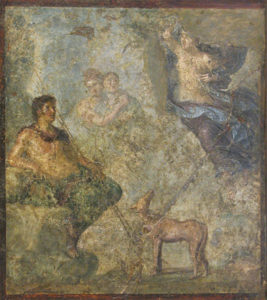
Throughout history, art has illustrated how our relationship with dogs kept changing. Dogs moved up in rank from scavenger and enemy to hunting partner, friends and eventually family. The ancient Greeks and Romans valued dogs for their faithfulness and courage. For example, in “The Odyssey” by the Greek philosopher Homer, the dog Argos is the only one who recognizes Odysseus upon his return. After faithfully waiting 20 years for his master, Argos succumbs to old age.
While the Greeks tended to form friendships with their dogs, the Romans varied in their attitude toward man’s best friend. They classed canines into three categories: hunting dogs (especially sighthounds), war dogs (usually large dogs from the Molossus breed) and companion dogs (smaller Maltese-type dogs).
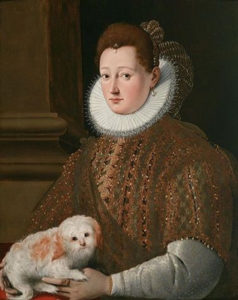
Dogs became even more popular during the Renaissance. There is a plethora of paintings that indicate dogs came to represent marital fidelity—not much of a surprise since they are known for their loyalty. Queen Elizabeth I favored the Maltese breed and some of the nobility purportedly kept small dogs on their laps to ward off fleas[2] (as the pests tended to favor dogs over humans), so the wealthiest began carrying dogs on their laps—whence the term “lap dog.”
By the time the 20th century rolled around, humans were more obsessed with dogs than ever before. They had become our friends, our partners, our hunters and our protectors. Many well-known artists included dogs in their work. For example, in 1957, Picasso painted 44 studies in his “Meninas” series and Lump, his friend’s dachshund, appears in 15 of them.
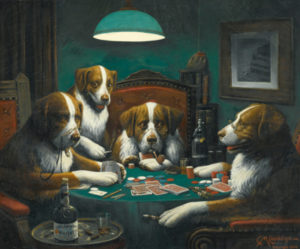
Advertisers also entered the scene and quickly learned that dogs sell products. “Dogs Playing Poker” refers to a set of 16 paintings by artist Cassius Marcellus Coolidge. The first painting, in 1894, depicts dogs playing poker. He later had 15 more paintings (nine of which also show dogs playing poker) for the advertising firm Brown & Bigelow.
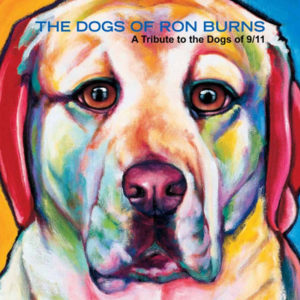 Dogs continue to inspire artists today. More than 20 years’ ago, Arizona artist Ron Burns found inspiration in his newly rescued puppy, Rufus, which led him to his next subjects: shelter dogs. Following 9/11, he changed his focus to dogs who had survived difficult circumstances. In 2014, Burns published a book dedicated to the canine heroes of 9/11, “The Dogs of Ron Burns – A Tribute to the Dogs of 9/11.”
Dogs continue to inspire artists today. More than 20 years’ ago, Arizona artist Ron Burns found inspiration in his newly rescued puppy, Rufus, which led him to his next subjects: shelter dogs. Following 9/11, he changed his focus to dogs who had survived difficult circumstances. In 2014, Burns published a book dedicated to the canine heroes of 9/11, “The Dogs of Ron Burns – A Tribute to the Dogs of 9/11.”
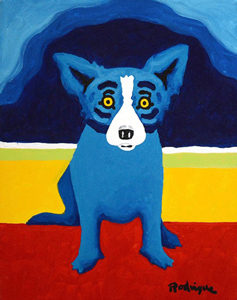
And who can forget George Rodrigue’s Blue Dog paintings and sculptures. The Blue Dog was originally created in 1984 for a book of Cajun ghost stories called “Bayou; the loup-garou, or Cajun werewolf dog, was eventually called the “Blue Dog” by the public, according to the George Rodrigue website. The Blue Dog series began to take shape in 1992 with myriad paintings—in pop-art and later abstract styles—as well as sculptures. Many of which are still available at George Rodrigue galleries.
It goes without question that our canine companions bring out the best in us and artists will continue immortalize man’s best friend in their works.
[1] "Animal Symbolism in Many Cultures" incredibleart.org
[2] Bruce Felton and Mark Fowler (1994). "Fashion and Grooming". The Best, Worst, and Most Unusual. New York: Galahad Books. p. 538. ISBN 0-88365-861-5
About the Author: Stacy Mantle is a fulltime freelance writer, bestselling author and founder of PetsWeekly.com. She resides in the deserts of the Southwest with a few dogs, several cats and a very understanding husband.



